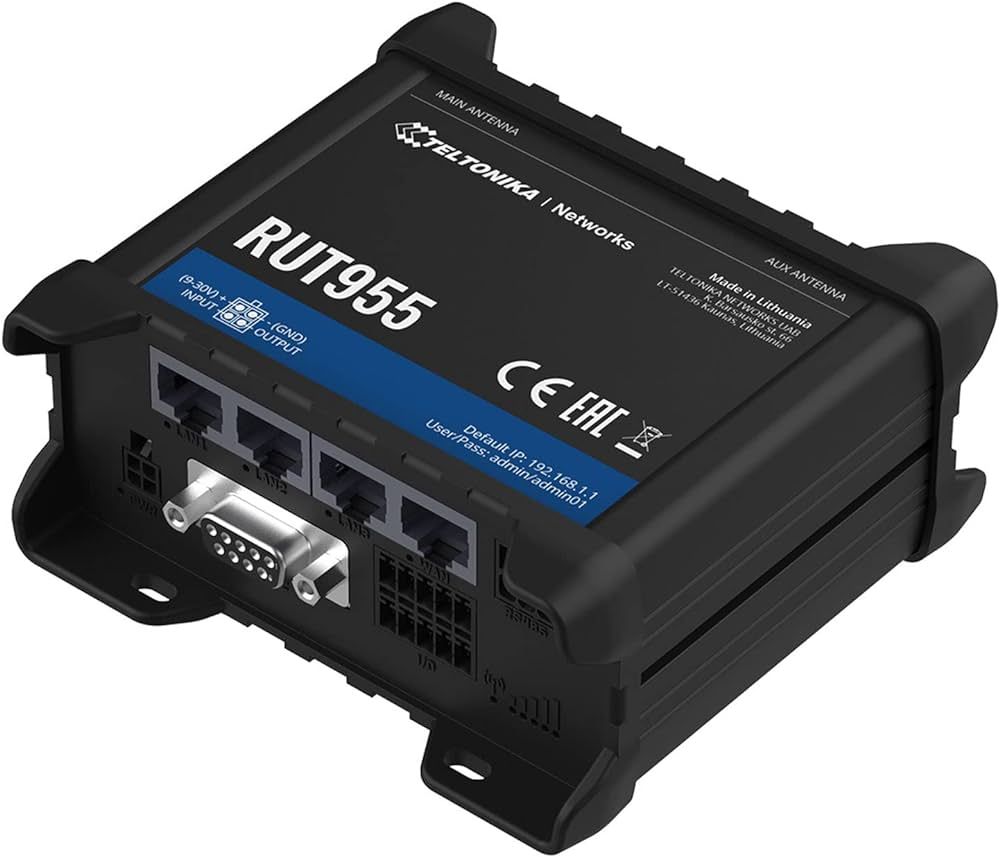In today's interconnected world, maintaining a reliable and secure internet connection is absolutely essential, particularly in remote or challenging environments. Teltonika cellular routers have emerged as a popular solution for their ability to deliver robust and dependable internet access in these demanding situations.

This blog aims to delve into the concept of Teltonika cellular routers and offer practical step-by-step instructions on how to establish a seamless connection using one.
What is a Teltonika Cellular Router?
A Teltonika cellular router serves as a versatile networking device that enables internet connectivity through cellular networks. These routers are highly regarded for their ruggedness, making them suitable for various applications such as industrial automation, transportation, agriculture, etc. They can create a Wi-Fi hotspot, connect to local networks, and act as failover solutions to ensure uninterrupted internet access.
How to Connect Your Teltonika Cellular Router
Here are some simple steps to connect your Teltonika cellular router:
Step 1: Unbox and Inspect
- The Teltonika cellular router should be carefully unboxed, ensuring all components are present. These include the router unit, antennas, power supply, and any necessary cables.
Step 2: Insert a SIM Card
- To ensure the smooth functioning of your device, insert a compatible SIM card from your cellular service provider into the designated slot.
- Verify that the SIM card is active and equipped with a data plan tailored to your specific requirements.
Step 3: Connect Antennas
- To ensure optimal signal reception, the provided antennas should be attached to the designated antenna ports on the router. This proper placement guarantees excellent signal strength and quality.
Step 4: Power On the Router
- If available, press the power button to turn on the router. The router will start up, and its indicator lights will display its status.
Step 5: Access Router Configuration
- To connect your computer or mobile device to the router, follow these steps:
- Firstly, you can connect by joining the router's Wi-Fi network. Alternatively, you can use an Ethernet cable for the connection. Please note that both methods are valid and depend on
- To access your router's settings, follow these steps: 1. Open a web browser. 2. Enter the default IP address of your router (usually 192.168.1.1) in the address bar. 3. Refer to the router's user manual.
Step 6: Configure Router Settings
- To access the router's web-based configuration interface, the user should log in using the default username and password. Typically, they are "admin" for both fields or "admin" for the username and a blank password. However, it is essential to prioritize security by promptly changing these credentials.
- To set up your internet connection, simply follow the on-screen prompts. You might be required to enter the APN (Access Point Name) provided by your cellular service provider.
- In order to improve readability, the sentence is divided into two shorter sentences. Other network settings can be configured based on individual needs. These settings include Wi-Fi SSID and password, security settings, and port forwarding.
Step 7: Test Your Connection
- After configuring the Industrial Routers, it is essential to conduct a test to ensure the stability of your internet connection. You may evaluate its performance by visiting websites, streaming videos, or running speed tests.
Step 8: Secure Your Network
- To enhance the security of your network, it is advisable to consider a few key steps. Firstly, changing the default Wi-Fi password can significantly bolster your protection. Secondly, enabling firewall settings adds and applying any other recommended security measures.
Step 9: Regular Maintenance
- To ensure optimal performance and security, it is advisable to regularly check for firmware updates for your Teltonika router and promptly apply them. This practice helps maintain the router's efficiency.
Conclusion
Teltonika cellular routers provide a reliable and versatile solution for establishing Internet connectivity in various scenarios. By following a few simple steps to connect and configure your Teltonika router, you can ensure a stable and secure Internet connection tailored to your specific needs.
Whether you're operating in a remote location, managing an industrial system, or simply seeking a dependable backup connection, Teltonika keeps you connected, granting seamless access to the benefits of uninterrupted internet service.
You Might Also Like: Demystifying the Rapid Spanning Tree Protocol (RSTP)








